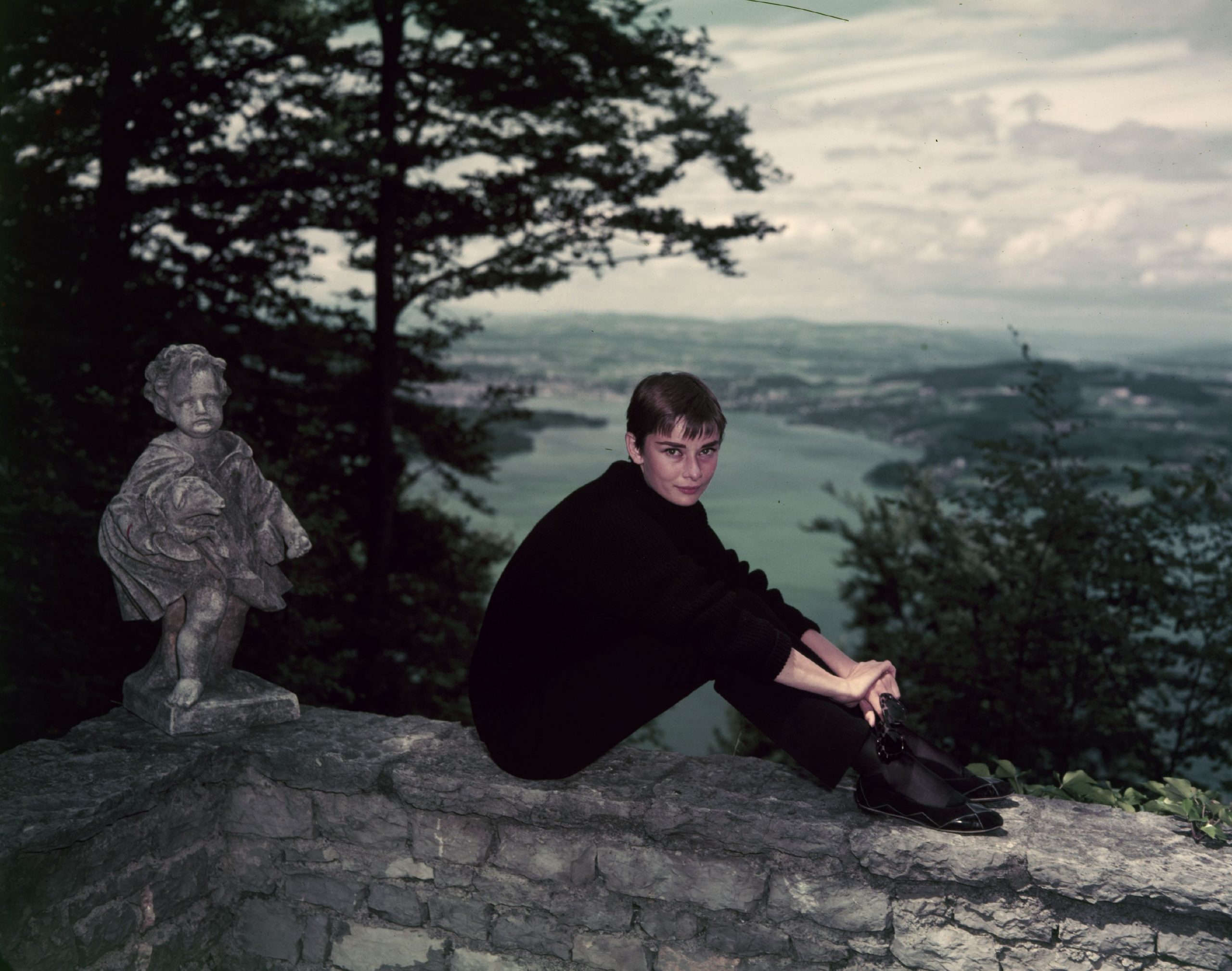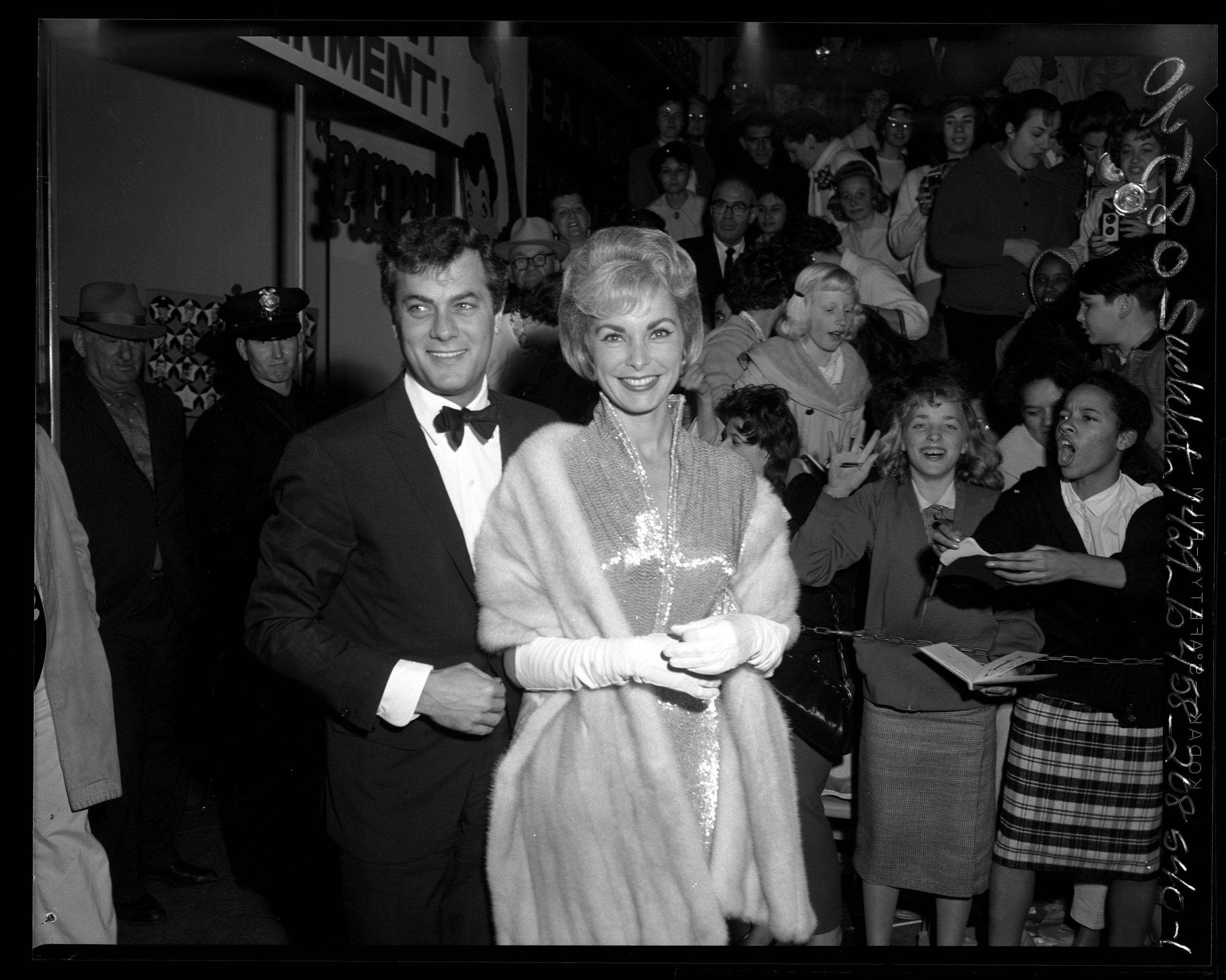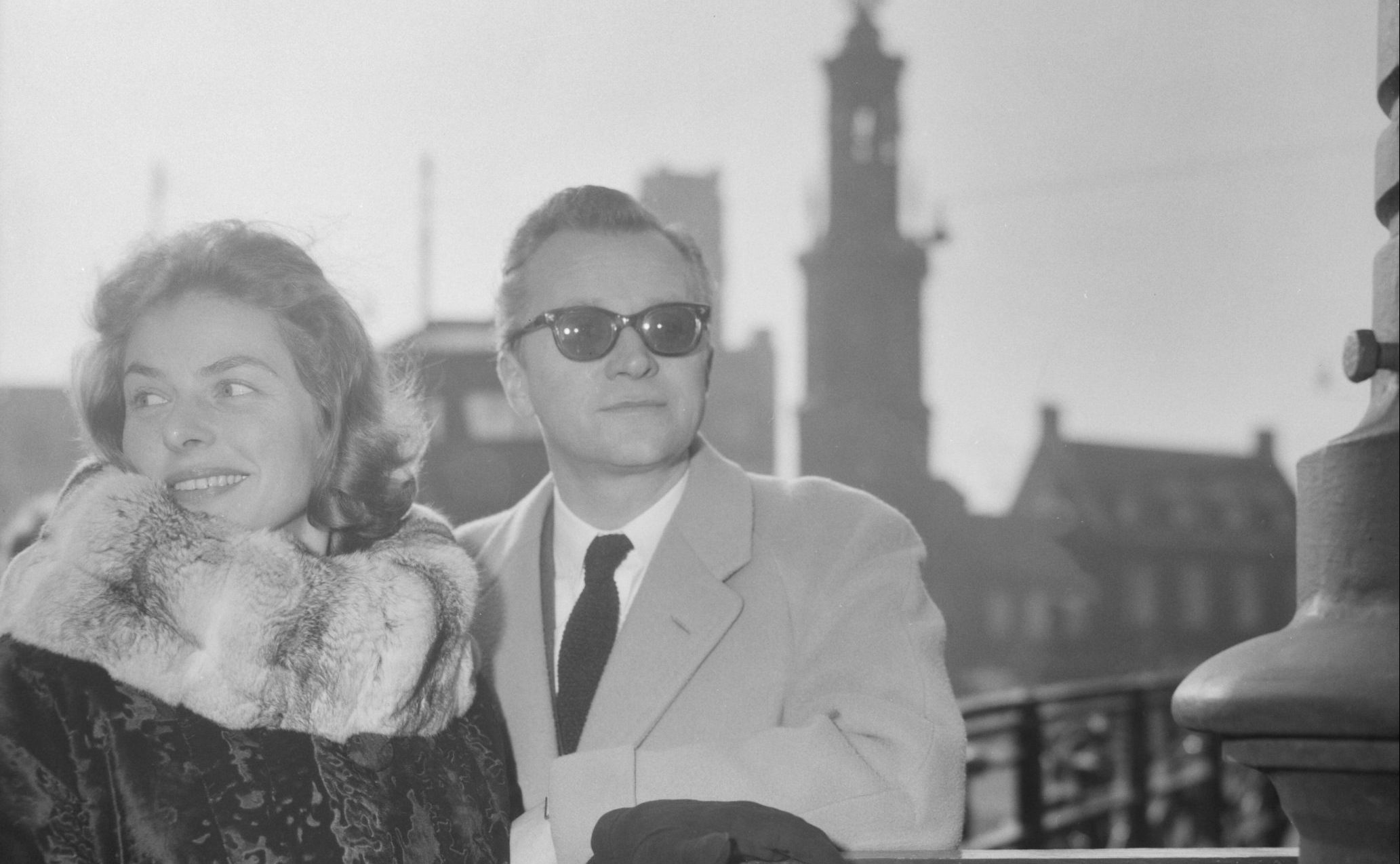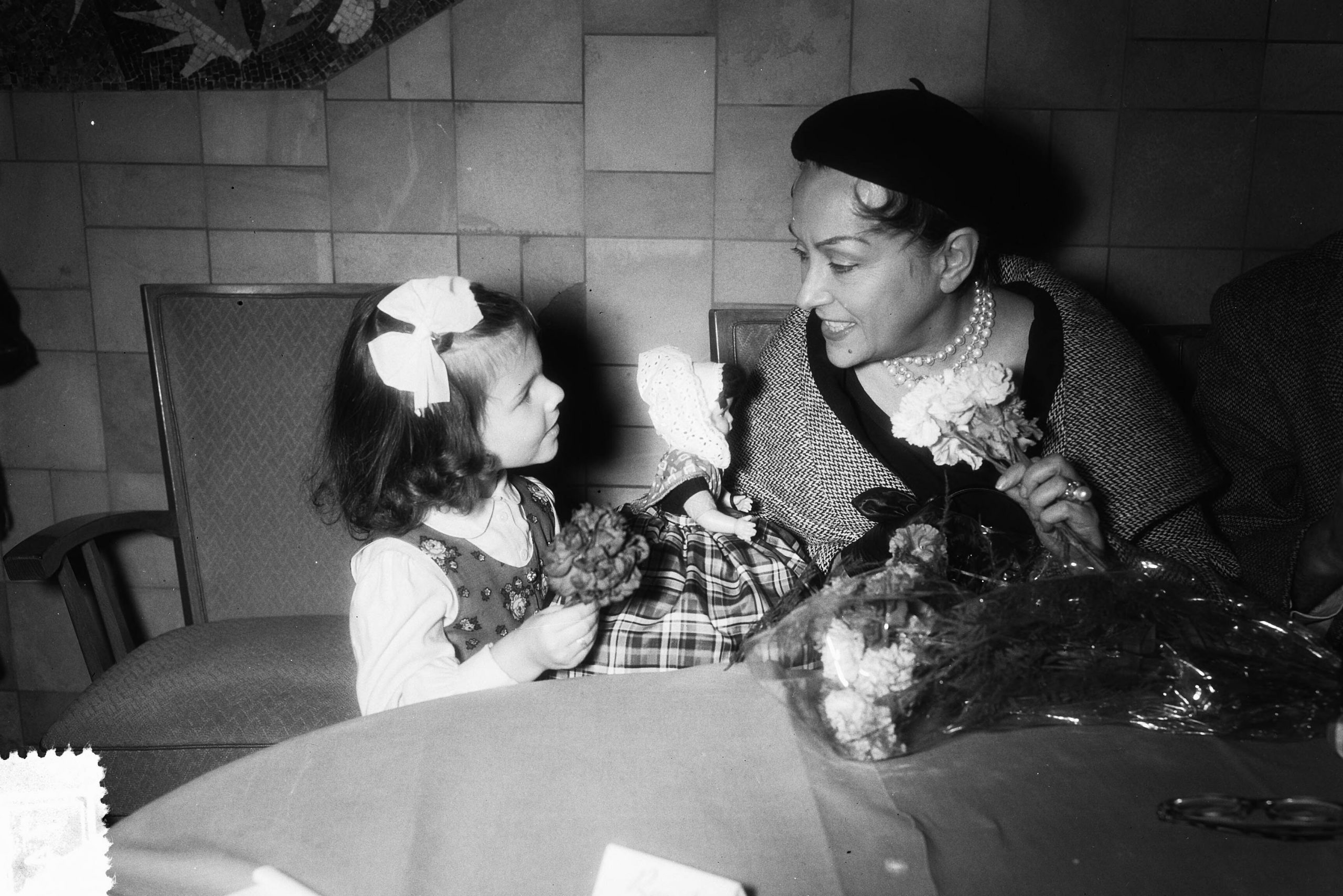Continued from part one
“I created my own image because I refused to change my name and my hairstyle,” Ingrid Bergman said in a 1972 interview with film historian John Kobal. She was also an actress who wanted to permanently transform herself, as she pointed out in that very interview with Kobal: Although Bergman was told several times that in America actors were expected to play more or less the same types of roles all the time, Bergman opposed it. She had an aversion to always playing the good girl or always playing the bad girl – thus preventing herself from ever being typecast.
Although Bergman might never have found her way to Hollywood without David O. Selznick, as she had imagined, the professional paths of the two filmmakers parted in the forties after only two films: eventually Selznick did express some ideas on his part about which roles Bergman should play and how – but the actress knew that she could rely on her own judgment.
How does an actor play his role in a film to the best of his ability when he doesn’t even know the exact ending of the film when he’s shooting it?
Casablanca
At some point, Selznick no longer saw it as his job to cast Bergman in his own films; rather, he loaned the actress out to other studios – as was customary at the time: When Selznick loaned Bergman out to Warner Brothers in 1942, hardly anyone could have guessed that Ingrid Bergman would immortalize herself forever with the film Casablanca. The film offer for Casablanca came at a time when Ingrid Bergman’s acting career was in a slump – without any doubt, that film is mainly responsible for the fact that Bergman is remembered as one of the most legendary Hollywood stars of the last century.
The shooting of Casablanca, in which Bergman starred alongside Humphrey Bogart and Paul Henreid, took place under difficult conditions: The script was still being written when filming had already begun. How does an actor play his role in a film to the best of his ability when he doesn’t even know the exact ending of the film when he’s shooting it? Ingrid Bergman, like all the other actors involved, mastered this challenge.
Actually, Ingrid Bergman wasn’t so keen on her role in Casablanca, which made her a legend: she had had her sights set on the film adaptation of Ernest Hemingway’s novel For Whom the Bell Tolls for quite some time…
Ernest Hemingway
Hemingway had already announced in the early forties that he would only collaborate on a film adaptation of his novel For Whom the Bell Tolls if Ingrid Bergman played the role of the young orphan Maria. Alongside Gary Cooper, Bergman starred for the first time in a color film in 1943 in For Whom the Bell Tolls: Hemingway himself was very disappointed with the film, which was stripped of any political background and turned into a romantic war film, but as a consolation he was left with the fact that Bergman had been given the role of Maria. The two films Casablanca and For Whom the Bell Tolls mainly contributed to Ingrid Bergman’s reputation as an established Hollywood star from then on. While still on the set of For Whom the Bell Tolls, director Sam Wood, Gary Cooper and Ingrid Bergman had agreed to collaborate on another film: With the pulling power of Gary Cooper, it was achieved that David O. Selznick loaned Ingrid Bergman another time for an astronomical sum. Saratoga Trunk (1945) advanced to become Warner Brothers’ most expensive production up to that date – the film was made in 1943, just as a mass of war films was flooding the U.S. film market. Saratoga Trunk was lost among all the war films and was released shortly after the Second World War.
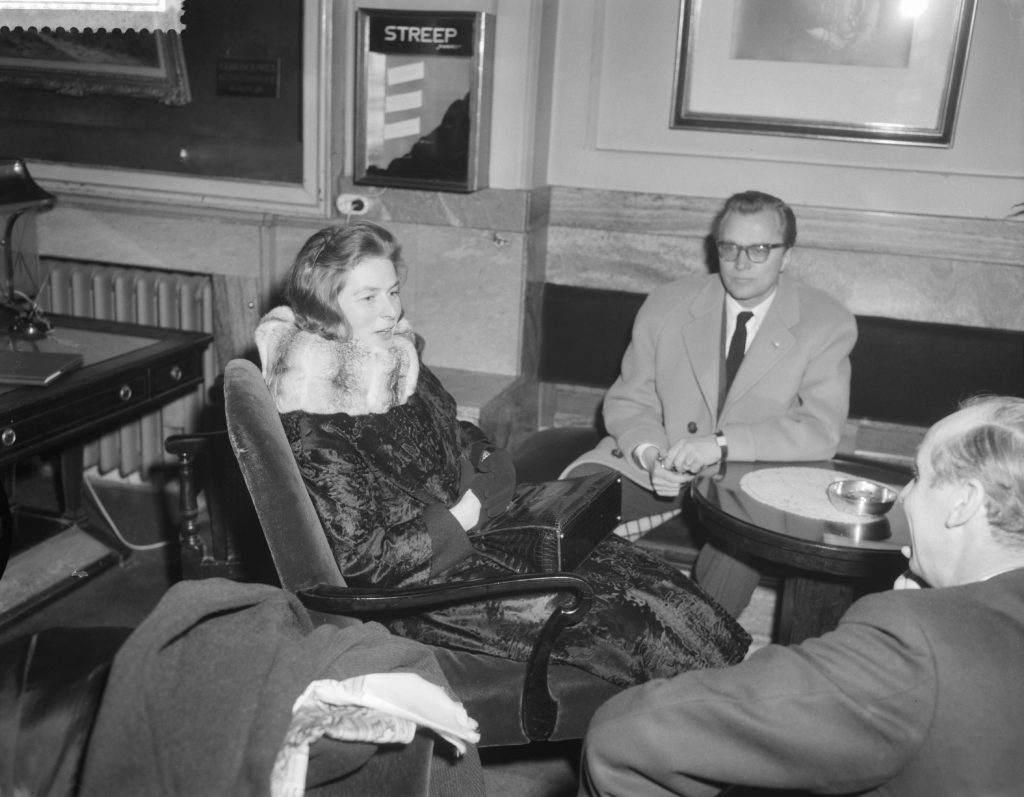
Picture credit: Fotograaf Behrens, Herbert / Anefo, Nationaal Archief, CC0
Alfred Hitchcock and Ingrid Bergman
Since Ingrid Bergman by now enjoyed the status of a Hollywood star, it was quite possible for her to start off film projects on her own initiative and to decide for herself which roles she wanted to play: British director Alfred Hitchcock, who arrived in Hollywood the same year as Ingrid Bergman, was also under contract to David O. Selznick in the forties. Bergman and Hitchcock would collaborate for a total of three films, all of which today enjoy the status of cinematic masterpieces: Spellbound (1945), Notorious (1946) and the historical film Under Capricorn (1949) are masterpieces of cinematography that reflect a unique harmony between actress Ingrid Bergman and director Alfred Hitchcock.
In the spy thriller Notorious, Ingrid Bergman starred alongside Cary Grant under the direction of Alfred Hitchcock: some details of the plot of the film, which was released shortly after World War II and took up contemporary espionage themes, were so explosive that Hitchcock was allegedly shadowed by the FBI during filming.
“Escape to Rome” – Break-up with Hollywood
Ingrid Bergman’s big break-up with Hollywood came at the end of the forties: the classic existence as a Hollywood actress had gradually become boring for Bergman, she wanted to set out for new shores and develop further in terms of acting. To realize this ambition, Italian director Roberto Rossellini entered her life at the right time: Bergman began making films in Rome and the passionate affair between the two filmmakers was soon the subject of all the tabloids and gossip columns. For the American public it was an absolute taboo that Bergman, while still married to her first husband, began an affair with Rossellini: Therefore, in her late forties, the actress embarked on an “escape to Rome,” which she was, however, by no means to regret. Precisely because of her willingness to immediately break away from Hollywood and move her center of life, both privately and artistically, to Europe, her public came to appreciate her all the more.
In the middle of the phase in her career when she was just standing on a Parisian theater stage every evening in the play Thé et sympathie, she received a special offer from director Stanley Donen.
Roberto Rossellini and Indiscreet
Italian film followed a completely different principle than the Hollywood films in which Ingrid Bergman had previously starred: although Bergman was happy to turn her back on Hollywood for a while in the 1950s, her connections in Hollywood were regularly needed to find her husband Roberto Rossellini indispensable producers for his film projects. Rossellini and Bergman shot a total of five films together – after a while, however, it was clear that even this partnership would not last forever, both professionally and privately.
At the end of the 1950s, Ingrid Bergman was regularly seen on the theater stage in Paris: In the middle of the phase in her career when she was just standing on a Parisian theater stage every evening in the play Thé et sympathie, she received a special offer from director Stanley Donen. He asked if Bergman would like to come to London to act again alongside Cary Grant in a film called Indiscreet (1958). Indiscreet is a late screwball comedy – Bergman also managed to prove herself as a comedienne with this film.
Cary Grant had a lot to thank Ingrid Bergman for – just over a decade earlier, Grant cemented his status as a Hollywood star with his role in Notorious alongside Bergman.
The Cactus Flower and Legacy
Ingrid Bergman was to pick up where the comedy success Indiscreet left off in 1969 with the comedy The Cactus Flower: alongside Walter Matthau, Ingrid Bergman performed brilliantly here – it was one of her last screen appearances – in a comedic role. That Bergman could be persuaded to return to Hollywood more than twenty years after her last Hollywood film speaks volumes: Bergman completely flourishes in the role of Stephanie Dickinson, a self-sacrificing dental assistant who must help her boss with an extremely sensitive task in the film. The Cactus Flower ushered in a late Hollywood comeback for Ingrid Bergman, manifested by her starring role in Walk in the Spring Rain (1969).
Ingrid Bergman was without question one of the most multifaceted actresses of the last century: she began her career as an actress right away under the right conditions for her, by confronting Selznick with a choice in 1939: either she would stay as she was or she would go back to Europe. Bergman’s idea of her own image worked out perfectly – up until the last years of her life, she was a sought-after screen actress: from romance to spy thriller to screwball comedy, she covered countless genres with her repertoire of roles – and all of this with a “German-sounding name,” allegedly unsuitable teeth for the screen and unplucked eyebrows.
Cover picture: Ingrid Bergman in 1960 in Amsterdam with the theater producer and her later husband Lars Schmidt (1917 – 2009)
Picture credit: Fotograaf Behrens, Herbert / Anefo, Nationaal Archief, CC0
Main source: Rossellini, Isabella & Schirmer, Lothar (publishers): Ingrid Bergman. Ein Leben in Bildern [A Life in Pictures], 2015 Schirmer/Mosel Munich

 Deutsch
Deutsch



